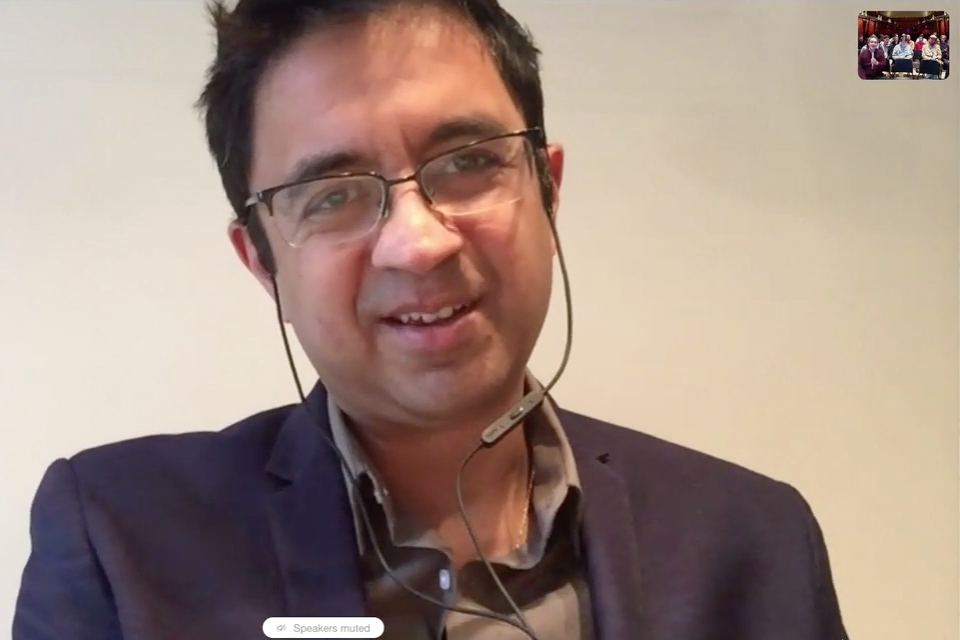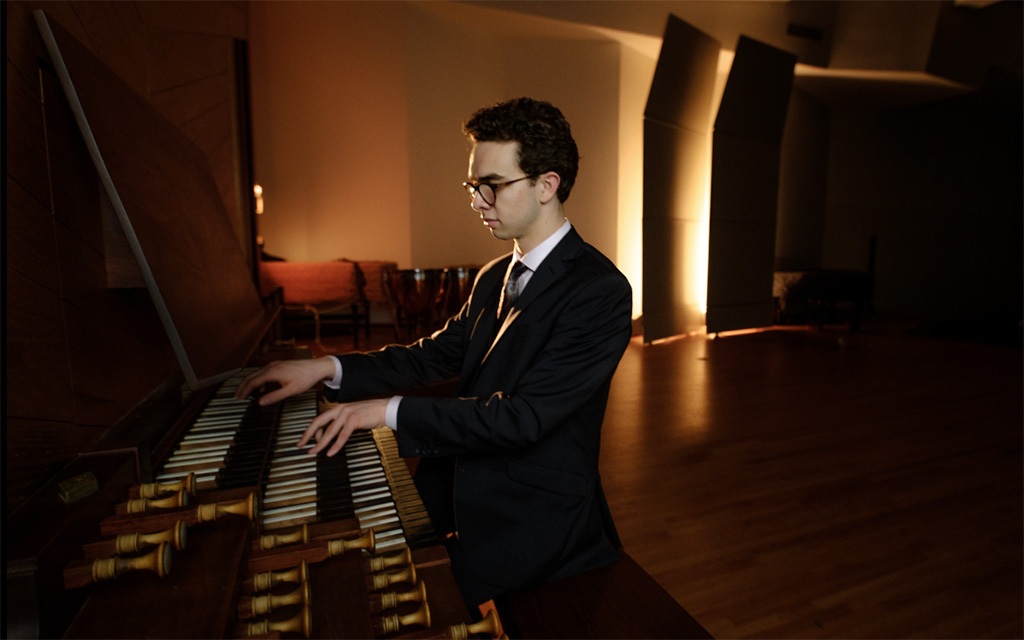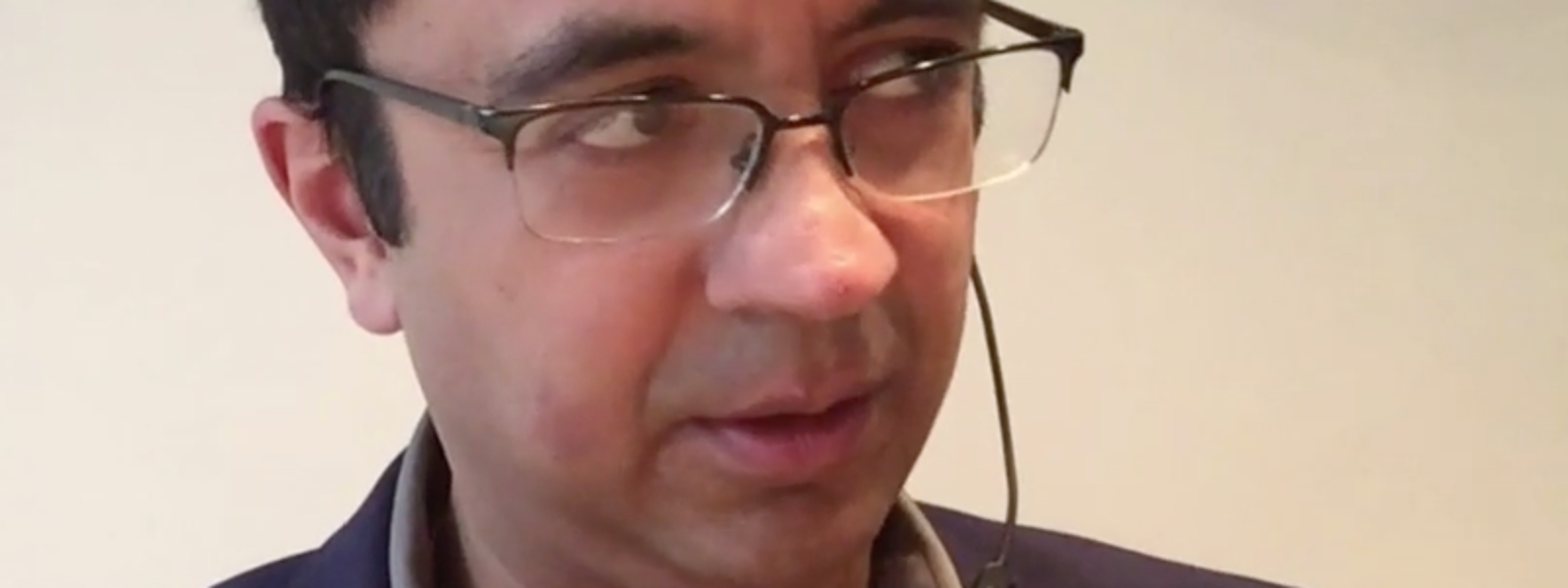Vijay Iyer
 Vijay Iyer’s music occupies a fascinating terrain. It’s a world that emanates from
a lifetime of improvisation and a multilayered approach to the passage of time. It’s
also music that reflects its creator’s quiet defiance of unexamined assumptions of
the Western Classical tradition.
Vijay Iyer’s music occupies a fascinating terrain. It’s a world that emanates from
a lifetime of improvisation and a multilayered approach to the passage of time. It’s
also music that reflects its creator’s quiet defiance of unexamined assumptions of
the Western Classical tradition.
Every fall, our Composition Department chooses a single living composer to focus on, studying several scores, and sharing our discoveries. This past fall, our students studied four of Iyer’s compositions:
- Mutations I-X for string quartet, piano and electronics (2005)
- Mozart Effects for string quartet (2011)
- Radhe, Radhe, a film score (2014)
- Trouble for violin and chamber orchestra (2017)
We all gathered in December to discuss the works, then met with the composer online to discuss them and his music in general.
The artist as seeker, a person who is always trying to look beyond his immediate horizon
When we asked him, at the outset of our discussion, to tell us about his life in music, the path that brought him to where he is today, he hesitated, as though concerned that the question was going to take us down a road where biography neatly explains art. The solution he found for this challenge was elegant and effective: he gave us a narrative that connected each phase of his life to a kind of exploration, so that all the artistic choices he has made through the years would connect to a central theme: the artist as seeker, a person who is always trying to look beyond his immediate horizon.
Mutations I-X is an immense composition that encapsulates many of Iyer’s strengths and concerns. As the title indicates, the piece is a set of etudes on change, or mutability. Some of the mutations are clearly notated, others are requested, as in “repeat and fade with mutations.” When asked how he gets Classically trained string players to improvise, Iyer reminded us that his life as a musician had begun as a Suzuki violinist, a practice that trains precision but not creativity. As a result, he said, “I can’t improvise on violin, it just doesn’t happen,” whereas on piano, which he taught himself, improvisation comes very naturally, “so I understand where these string players are coming from.” His strategy is to get rid of the “i” word and just talk about ideas and different ways they can be used. He came up with a “gesture pallete” for Mutations, a page of musical ideas that are used throughout the piece as starting points for various improvisatory passages. By the end of the recording session, they had arrived at a place where they could take the entire composition as a gesture palette, a basis for improvisation.
Some kinds of trouble – trouble in the service of justice – are good
The most recent piece we looked at was Trouble, completed just this past spring. The title refers to Congressman John Lewis’ observation that some kinds of trouble – trouble in the service of justice – are good. A question was raised about the wrenching music of the third movement, which is dedicated to Vincent Chin, a Chinese-American factory worker who was beaten to death in Detroit in 1982. Apparently other factory workers thought Chin was Japanese and thought that Japan was stealing jobs from Americans, and decided that beating up this guy that they thought was Japanese was an appropriate action to take – as Iyer said, a double tragedy.
At this point in our session, the composer became, if possible, even more thoughtful, reflecting on the problem of linking biography and art. He described working with dyads in a thread of double-stops in the violin, and how his thoughts were completely focused on the technical challenges involved, both compositionally and instrumentally. Nonetheless, when the music was complete, he couldn’t deny there was an emotional power to the result that seemed to come from somewhere beyond his focus.
In conclusion, we discussed the years after Iyer departed from academia, a world that has left both a lasting, positive imprint on him and given him something to push against in his search for artistic value. This last part of the discussion was, I believe, very helpful for our students, who all have to make serious choices and decisions about where they are going as artists, some of them as soon as this spring.
January 24, 2018






